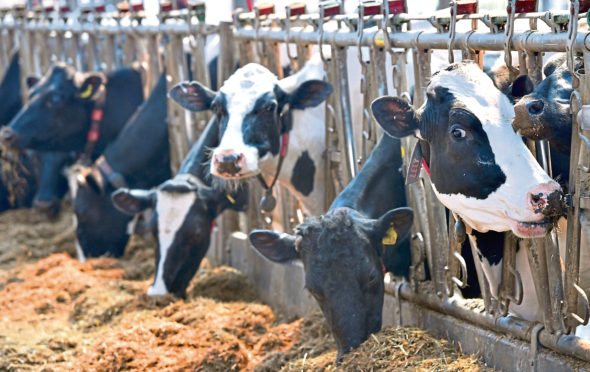Farmers could soon be able to predict which cows in their herd are likely to go lame thanks to a new technique developed by scientists.
Researchers at Essex University and Writtle University College have found big differences in how healthy and lame cows move around in their barn using location tracking data collected from wireless sensors on the cattle.
Their study, published in the journal Plos One, found that although healthy and lame cows moved the same distance within the space available in the barn, how often they revisited specific areas and where they moved in the barn was different.
A group of 10 lame and 10 non-lame cows were monitored within a herd of 210 pedigree Holsteins on a dairy farm in Essex.
Location data was collected continuously over five days using wireless sensors on the cows’ collars and a real-time location system which processed and analysed the data.
Healthy cows were found to explore a wider area of the barn and spend more time in the feeding area, while lame cows spent less time in the feeding area and more time in the areas with cubicles for resting.
The researchers were able to show how movement and use of space could be used to accurately predict the lameness status of individual cows.
“In our study we have developed a method which could potentially be an exciting system farmers could use to monitor the health of their herds in the future,” said Professor Edward Codling, from Essex University.
“Using a simple predictive model based on only two measures of space use – the proportion of time spent in the feeding area and the full range of area they used in the barn – we were able to accurately determine the lameness status of cows in the study.”
Dr Jonathan Armory from Writtle University College said: “Early detection of lameness can reduce the severity and duration of animal pain, and also minimise potential costs to farmers.”
